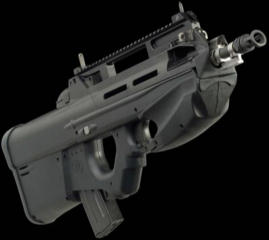

 The Accurate Reloading Forums
The Accurate Reloading Forums  THE ACCURATE RELOADING.COM FORUMS
THE ACCURATE RELOADING.COM FORUMS  Rifles
Rifles  Modern Military Rifles
Modern Military Rifles  308 in M1A?
308 in M1A?Go  | New  | Find  | Notify  | Tools  | Reply  |  |
| One of Us |
I have a Springfield Armory Super Match made in 2006. I read somewhere that only 7.62 is safe to fire not 308 Winchester. The reason given was that the bolt heavily closing could cause the 308 to accidently fire. Informed opinions appreciated. Thanks, Bill --- | ||
|
| One of Us |
I have a 2005 Springfield Super Match made in 2005. Here is a quote from the manual: "The M1A is designed and built to specifications to shoot standard factory military 7.62 NATO ammunition. The specifications for standard military ammunition include harder primers to withstand the slight indentation from the firing pin when the bolt chambers a cartridge. This slight indentation is normal. The use of civilian ammunition with more sensitive primers or handlaoads with commercial primers and/or improperly seated primers increase the risk of primer detonation when the bolt slams forward. This unexpected "slam fire" can occur even if the trigger is not being pulled and if the safety is on. Use of military specification ammunition will help avoid this." | |||
|
| one of us |
I have personally shot and seen shot several different M1-A's and M14's. I have used and seen used standard factory 308 ammo, thousands of rounds of it, with no problems. Also I have reloaded thousands of rounds for a M1-A's and M14's with dies marked "308", again with no problems. DOUBLE RIFLE SHOOTERS SOCIETY | |||
|
| One of Us |
same kind of BS that the 223/5.56 has going on | |||
|
one of us |
I'm glad I never read the manual! Mine has never seen any 7.62 NATO. -------------------------------------------- Well, other than that Mrs. Lincoln, how was the play? | |||
|
| One of Us |
The greatest risk in shooting factory ammunition in the Garand/M1a type actions is a slamfire due to sensitive primers. This is a very rare occurrence, very rare with factory cartridges, but it does happen. It happens because of the design of the Garand/M1a. The Garand has a longer, heavier firing pin than the M1a, but they are the same basic action. There are more slamfire reports with Garands but there are in battery and out of battery slamfire reports with both types of actions. Slamfire reports in Garands with factory ammunition are generally inbattery because there is little to no resistance to chambering factory ammunition. The Garand/M1a has a free floating firing pin, like this M1 carbine. The M1 Carbine and the M1 Garand/M1a have a firing pin retraction cam. This cam pulls the firing pin back during extraction. It also has limited utility as a safety device, but is easily defeated by tight or long rounds. If your round was smaller than the chamber the odds would will be in your favor to have an in battery slamfire. If the round is longer or fatter than your chamber the bolt has to stop, to crunch fit the case, and at that moment the firing floating firing wacks the primer at its highest velocity, but the lugs are not necessary in battery. This is a M1 Carbine firing pin retraction cam. 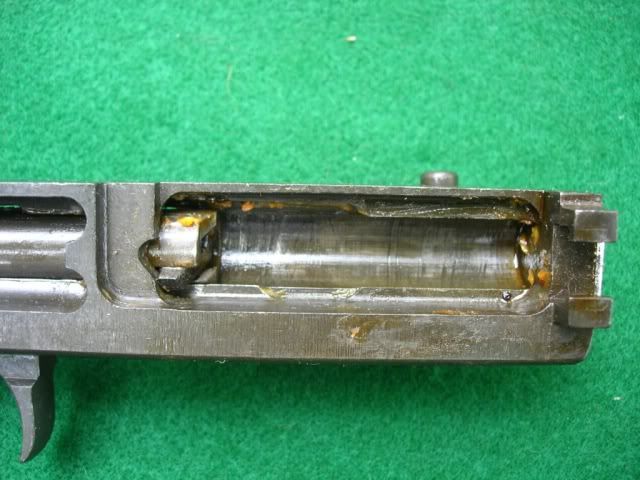 This is the M1 Garand/M1a firing pin retraction cam they are functionally identical, just the carbine is easier to visually understand.  These are M1 Garand receivers and the firing pin is fully forward and just touching the firing pin retraction cam. As you can see there is only thousand's of an inch of forward movement left in bolt cam down and yet the firing pin is out about 0.064" of the bolt face.   This where out of battery slamfires occur. If the bolt has to stop here to crunch fit a long case or a fat case that firing pin is rebounding off the back of the primer at its highest velocity in its forward travel. Reloading Advice for these rifles: It is important to small base size cases used in these rifles and to set up the dies with a case gage and size to gage minimum. (Assuming you don’t know the headspace of your chamber, if you do, always be 0.002 to 0.003” less) You want the bolt to close without resistance. This will reduce the risk of an out of battery slamfire. 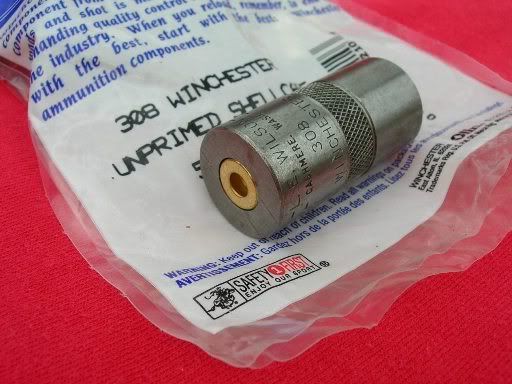 There are some who say small base dies are not needed in these rifles, the Gunwriter Mike Venturino has been one. For years he has been saying in print that only standard sizing dies are need. But in the July 2012 issue of Guns Magazine, he is testing an M1a and a AR10 and his reloads are too tight. I find it humorous to read of him beating the bolts open with scrap lumber. Ha, Ha. If you attempt to small base size with a spray on lube you will stick the case in the die. I recommend RCBS water soluble or Imperial Sizing wax. These are excellent lubes. For these rifles it is safety critical to ream primer pockets to depth, seat the primers by hand, and verify that all of the primers are below the primer pocket. There is a chance that a cocked primer, with the anvil firmly seated on something, will cause a primer initiated slamfire. A high primer can cause a slamfire but only if the anvil is firmly seated. High primers are one of the most common cause of misfires because the primer won't fire unless the anvil is seated and is pushed up into the primer cake. However, given a shallow pocket it is theoretically possible that high primers could slamfire. Mr Faatz did this by stuffing an extra anvil in the primer pocket. He could not get unsupported high primers to ignite. Reference A. Just examine the back of the ammunition you have and see if there are high or cocked primers. It is also safety critical to use the least sensitive primer around because these rifles will slamfire in battery or worse, out of battery, given a sensitive enough primer. The US military controlled slamfire probability by using insensitive primers, primers that were not available to civilians in the US till 1999. At the time it was called the FA34 primer, CCI now sells the equivalent as the CCI #34. Of course the military issued only new ammunition that was smaller than the chamber, but even with the less sensitive primer and new cases I have found accounts of out of battery slamfires in Garands and M14’s with military ammunition. Based on a review of William Davis’s slamfire analysis on the M16, and subsequent recommendations of slamfire probabilities, I believe the US Army considered a slamfire probability of 1:84 million to be acceptable. This is close to the probability of dying of snake bite in the US, people win lotteries with worse odds, but overall, you can shoot an entire lifetime and never experience a slamfire, and that would be a good thing. However William Davis analysis also showed slamfire probabilities of 1:9000 and worse with sensitive primers. I don’t know how many 1:9000 primers you would have to shoot before you have a slamfire, but the odds are not in your favor. Federal primers are the most sensitive primer on the market and the most "slamfiring" primer in Garand/M1as. I have lots of web accounts of slamfires with Federal primers. Don’t use them. I recommend CCI #34's and Tula7.62 primers as they considered "Mil Spec" primers. When firing single shot, feed from the magazine. Do not put a round in the chamber and drop the bolt. Lots of inbattery slamfires, and a few out of battery, have happened because of this. You want to slow the bolt down. When rounds feed from the clip the friction between cartridges slows the bolt a bit. Use powders that are close to IMR 4895 in burning rate or just use IMR 4895. High port pressures are the concern. High pressures will create excessive operating rod acceleration. Reference b. recommends choosing powders that have burning rates between IMR3031 and IMR4320. This includes powders such as IMR 4064, and Winchester 748. I believe the first choice of powders are IMR 4985, H4895, AA2495. I have used a load of 168 grain Sierra Match, 40.5 to 41.5 grains IMR4895, LC cases, and CCI #34 primers OAL LT 2.800” for years. This is a great target load, 41.5 grs should be considered a maximum load. Tried the Tula 7.62 primers this year and they shoot well:  Other targets with the CCI #34 primer:    Check cartridges for case head separation. Gas guns are hard on brass: the bolt unlocks while there is still significant chamber pressure. So the case gets stretched on extraction. Carefully inspect cases for stretch ring marks at five reloads. They occur about .4” of an inch ahead of the base. You can verify if the cases are internally necking by inserting a bent paperclip in the case, and feeling for an edge. A number of shooters I have asked claim various case lives in the M1 or M1A. Some have case head separations about the fifth reload, others have taken their cases up to ten reloads. The useful lifetime of a case is determined by case head separations, case neck splitting, or primer pocket enlargement. When any one of these failure mechanisms happens to a case, it has exceeded its operational lifetime. In my experience, US military brass holds up better than commercial cases. But this is a broad generalization. You want to use heavy cases over light cases. References: a. The Mysterious Slam-Fire, American Rifleman, Oct 1983 b. Reloading for the M1 Rifle, American Rifleman, Mar 1986 Lest you think that the Garand/M1a is the only design that will slamfire, let me correct this. I have slamfire accounts for FAL’s, AK47’s, M1 carbines, heard of out of battery slamfires in Mini 14’s, AR 15’s, AR-10’s, SKS, MAS 36-59 rifles, Tavor and Winchester 100. Probably some more if I was to look Basically any semi automatic mechanism with a free floating firing pin will slamfire given a sensitive enough primer. However, the M1/M1a/M1Carbine/Mini 14’s will also slamfire out of battery, and it is due to the design peculiarities of these actions When you look at the Garand/M14/M1 carbine/mini 14, these mechanisms always have the centerline of the bolt inline with the primer all the way up to lock up, the firing pin is not retracted in any sense until cam down, and the effectiveness of that receiver bridge in keeping the firing pin from hitting the primer is questionable. Other designs, such as the AR15, the firing pin is positively kept back until cam down. You never hear of out of battery slamfires with AR’s even though you hear of in battery slamfires. Other mechanisms, the bolt faces tilt out of alignment until lock up, preventing contact between the firing pin and primer, and you read of slamfires in SKS’s and FAL’s (for example), they are always in battery. I never read of slamfies in the roller bolts. It is impossible for the firing pin to reach the primer before lockup in a roller bolt. The firing pin spring is hideous strong and will not allow firing pin bounce. This design is very effective in preventing slamfires. 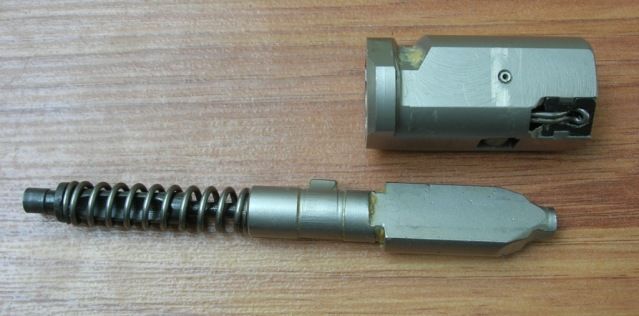 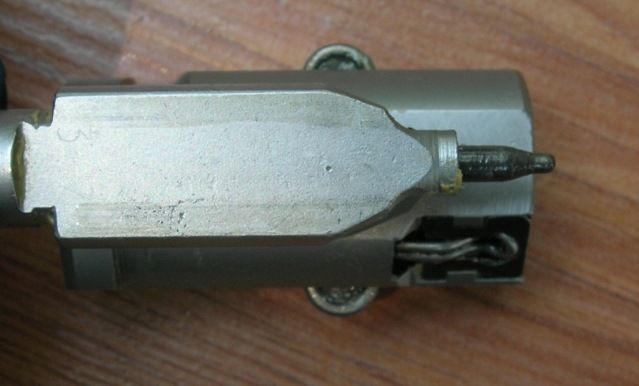 | |||
|
| Powered by Social Strata |
| Please Wait. Your request is being processed... |
|

Visit our on-line store for AR Memorabilia

